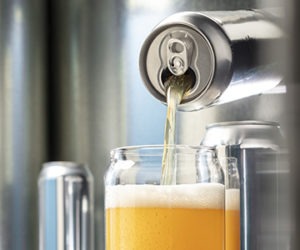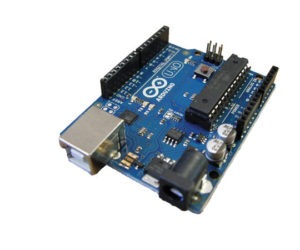Expanding Your Homebrewery: Tips from the Pros
Pro: Chris Graham, MoreBeer! in Concord, CA
The biggest benefit to expanding your homebrewery, aside from increasing volume, is reducing work.
For extract brewers looking to upgrade basic setups, there are several things that you can do to expand your homebrew setup while still using extract.
First, get a kettle large enough to boil your entire wort at once instead of topping up with water at the end. The flavor impact mainly comes from not boiling with such concentrated sugars. From our experience at MoreBeer! helping thousands of homebrewers get started, this was by far the biggest single improvement people have reported back that made their beer better. This is generally a slippery slope in cost, however, as a new kettle often means buying an outdoor burner.
Next, to perform a full boil, you will need a way of getting the wort chilled down quickly, so you will want a chiller. This reduces your risk of added wild yeast and bacteria infection as well as other off flavors that can occur if you don’t chill down quickly.
For all-grain brewers, I would recommend a brewing sculpture to streamline the brew day. After that, I would look at adding a refractometer for fast, easy gravity readings. It is also a good idea to look seriously into some kind of brewing software (BeerSmith is my choice, although there are many. Read Forrest Whitesides’ story on brewing software in the May-June 2011 issue of BYO for more choices). Finally, a pump to move your liquids around is very helpful, and you should always have a good mash paddle and good thermometers.
Fermentation temperature control is also important for all homebrewers, extract or all-grain. This is really where the most flavor impact can be made on the beer as well as repeatability, so if you can afford either a fermentation chamber (like a chest freezer) or a temperature-controlled fermenter, I would recommend it.
In addition to controlling fermentation temperatures, every homebrewery could benefit from adding a water filter — it’s hard to make great beer with bad water. Also, an oxygen system is handy. It is so easy to do and the yeast really benefits.
Some of the downfalls of expanding can be a problem, though, so be aware of the changes in your brewhouse. For example, things don’t always multiply correctly when you scale up. Let’s say you are moving from 5-gallon (19-L) to 20-gallon (75-L) batches and you have a killer 5-gallon (19-L) recipe you want to brew on your new setup. You may find that you get different hop bitterness extractions as you increase your boil kettle size.
Other expansion issues I’ve noticed happen when homebrewers try to add too much at once, then don’t know what change made a difference in their homebrews. I am a big fan of adding one thing at a time to a brewery then waiting to see what the impact of it is. That way if something goes well you know what caused it; but better yet if something goes wrong you know what to investigate. Also, I find that adding slowly gives you something to look forward to on future brews and trips to the homebrew shop.
Pro: John Blichmann, Blichmann Engineering in Lafayette, IN
My best move in my twenty years of homebrewing was moving off the stove and into full-wort boils with a larger pot and a propane burner. This not only saved my stove (and my marriage) from all too frequent boil-overs, it also allowed me to make light-colored beers like Kölsch and Pilsners that concentrated wort boils just didn’t do justice to.
Full-wort boiling does necessitate moving outdoors, but a propane burner will bring your water up to temperature much more quickly than your stovetop. Buy a quality pot you can keep forever, and don’t skimp on size. I always recommend a volume of about two times your batch size for a boil kettle so that you can accommodate your starting wort volume and have adequate clearance for boil-over protection. About 8 to 10 gallons (30 to 38 L) for a 5-gallon (19-L) batch is about right. And if time is your nemesis, as it is for my busy family schedule, look into high efficiency burners.
Before you delve into building your dream homebrew system dripping with stainless steel and sexy digital controls, develop a well thought out, long-term plan. Not a plan for a year down the road, but for the next five to ten years. You’re about to invest in expensive equipment that you don’t want to replace after a couple of years because it no longer fits into your plans. The most important decision is whether or not you eventually want to move into all-grain brewing, and if so, what batch sizes you want to brew. Keep in mind that making 10 gallons (38 L) of all-grain beer doesn’t take much longer than 5 gallons (19 L). However, if you brew frequently 10-gallon (38-L) batches may tax your storage facilities.


